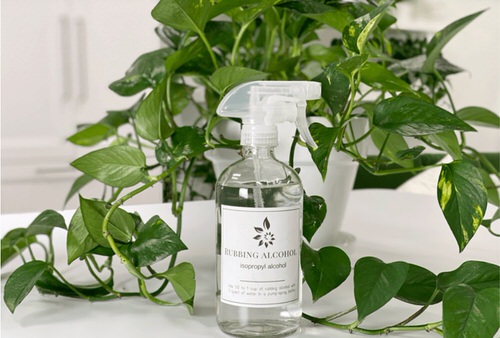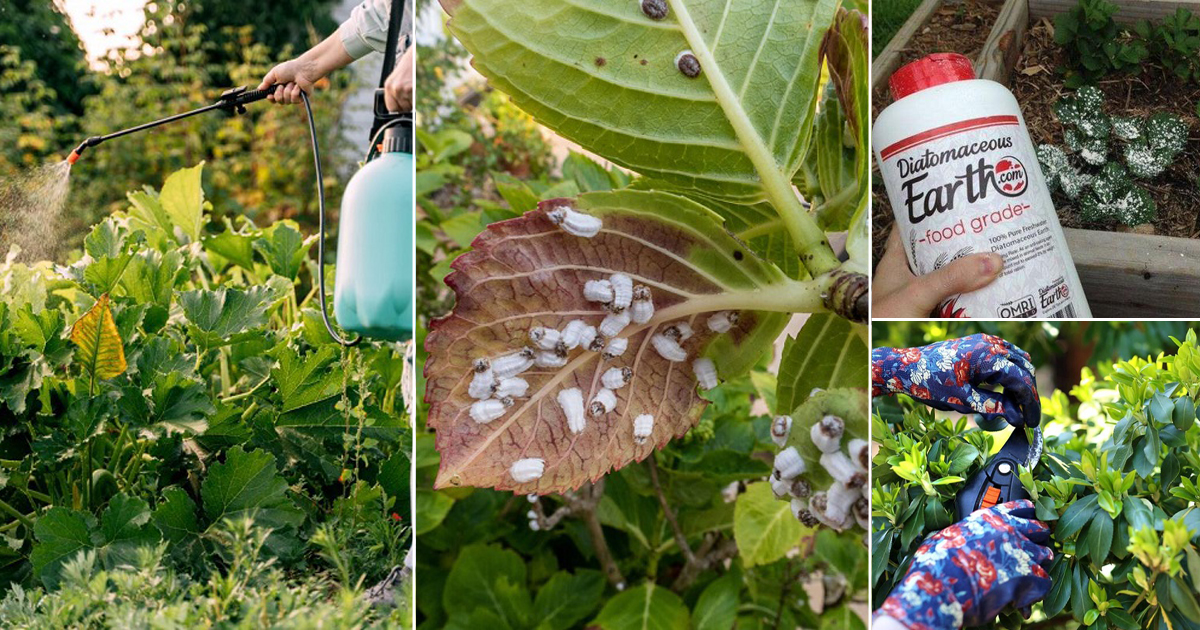Are you stuck in a battle against White Mites? Then, check out this expert guide and learn How to Get Rid of White Mites on Plants!
The highly tiny sucking White Mites can wreak outdoor and indoor gardens havoc. You can usually spot them by the fine, silky webbing they spin on the plants and the damage they spell on the foliage. Learn How to Get Rid of White Mites on Plants here.
What are White Mites?
Often, White Mites are a species of Spider Mites, and they look similar to a spider. White Mites have eight legs and are arachnids who live in colonies. Usually, whenever you spot one or two on your plants, there is a high chance of more.
There are hundreds of species of White Mites that can attack outdoor and indoor houseplants. Typically, they are available in various colors, such as yellow, green, red, and brown. While some tend to change colors throughout the year, some can stay translucent. White Mites or Spider Mites can form a cluster on the leaves undersides and cause damage to the plant by sucking on the tissues.
How to Recognize White Mites on Plants?
White Mites are known to grow by feeding on plant juice from the leaves, and here are some signs that you can look out for the tiny white bugs on the plant:
- When a Mite feeds on sucking out plant tissue, it makes the leaves look yellow, stippled, dry, and covered with light yellow blotches or spots.
- You can even spot white spots on your leaves due to Mites sucking chlorophyll from your plants.
- Some Mites cause distortion and discoloration of the leaves by injecting toxins into them.
- If you notice any fine webbing on the leaves that looks very similar to a spider, you should know it’s the Mites.
- When Mites attack conifers, the needles often turn yellow and drop them off.
- It is challenging to spot these tiny pests with your naked eye. So, hold a white paper sheet below the plant that you suspect is affected by Mites. You will see the pesky bugs crawling onto the paper. Use a magnifying glass to observe better.
Mostly, White Mites attack outdoor plants such as pumpkins, cucumbers, squash, tomatoes, beans, and several other trees and shrubs. White mites on indoor plants attack houseplants with tender, thinner leaves, such as elms, evergreens, honeylocust, broadleaf evergreens, dwarf fruit trees, and roses. These bugs love the dry, warm conditions.
How to Get Rid of White Mites on Plants
Here are some ways to get rid of the Mites:
1. Prune & Isolate
Once you have discovered the White Mite problem, you should immediately isolate the affected plants away from any other plants. Then, prune out any parts that clearly show signs of being affected, such as fine webbing and holes. Very carefully dispose of the infested sections in the trash. This will help you prevent the spread of the mites to their neighbors.
Also, disinfect the plant’s earlier spot area and your hands afterward.
2. Spray With Water
Most White Mites love to live and grow in warm, dry conditions, and one of the best ways to fight them is to spray the plants with a challenging blast of water regularly. Remember to aim at the undersides of the leaves and repeat the process twice a week to kill white mites on plants.
You can place your indoor houseplants under running water from the faucet spray in the kitchen sink or soak them in a bathtub. Then, let them dry out and repeat at least twice a week.
3. Diatomaceous Earth
Diatomaceous Earth is a neat way to get rid of mites and other insects and prevent further infestation. The fossils of tiny aquatic organisms make this crumbly substance. The substance’s microscopically sharp shards scratch the mite’s waxy leather shell, causing their death in 1-5 days. It can work similarly to an insecticidal soap when killing stubborn pests.
To make your mite killer spray, add 5-7 tablespoons of Diatomaceous Earth to one gallon of water and shake well to create a solution mix. Apply the solution in thick coats to the more challenging spots, such as the undersides and tops of your plants.
4. DIY Herbal Tea Miticide
To make your effective Mite spray:
- Add one tablespoon of ground cloves, two tablespoons of Italian seasoning, and one tablespoon of cinnamon powder to a quart of water.
- Boil this water and allow it to cool down completely.
- After slightly cooling, add tablespoons of crushed garlic or garlic powder.
- Allow it to rest until it is completely cooled down, then strain the mix.
Now, add 8-10 drops of dish soap, mix well, and pour into a medium-sized spray bottle. Shake well before use and apply on the underside of the leaves to get rid of the White Mites. Repeat once every 3-5 days for 2-4 weeks.
5. DIY Lemon Miticide

When infested by mites, you can protect your precious plants in indoor and outdoor gardens by installing a cardboard boundary wall around them. This will allow you to spray lemon juice on the plants without harming other plants. Add lemon juice and water to a spray bottle in a 50:50 ratio and shake well. You can use this mix to spray the mites to kill them directly. Repeat the process once every 7-10 days for the best results.
6. Encourage Predators
There are a bunch of predatory bugs that are known to feed on mites. You can buy these insects, such as predatory thrips, spined soldier bugs, ladybugs, big-eyed bugs, and lacewings, at a garden center or online sellers.
7. Neem Oil Spray

Neem oil is an organic product and a natural way of fighting White Mites. Most animals and humans are not at any risk due to neem oil. The Azadirachtin is an active compound that interferes with the mite’s molting, feeding, egg-laying cycle, and mating. Thus, neem oil spray can be very efficient in dealing with these pesky insects.
To make a DIY Neem Oil Spray, you need:
- Warm water (1-2 liter)
- 1-2 teaspoons or 5-10 ml of neem oil
- 2-4 ml of mild detergent or liquid soap
Add the ingredients mentioned above and mix well. Use a spray bottle to apply the spray to the foliage and a microfiber cloth to wipe it off gently. Make sure to apply this spray once every 7-10 days.
WARNING: While neem oil is considered safe for humans and animals, it is poisonous for fish and other aquatic lives. Use it carefully to stop any run-offs from reaching lakes, ponds, and streams where the mix can kill marine life.
8. DIY Garlic Spray
Use garlic in a foliage spray. It can be effective against white mites, aphids, cabbage worms, whiteflies, Colorado potato beetles, bean beetles, moths (including the diamondback moth), termites, and ants.
- To make your Garlic Spray, you need a mineral oil, four cloves of garlic, dish soap, and water.
- Mince the garlic cloves, add one tablespoon of mineral oil, and let them rest for 24-25 hours.
- Strain out the minced garlic and add 1 pint of water and one tablespoon of mild, liquid dish soap.
- Pour a pint of water into a spray bottle and add two tablespoons of the concentrated garlic mix.
- Shake well before use, and you can test the combination first on a minor part of your plants.
- If it leads to any damage, such as yellowing or browning, you must dilute the spray with water further.
9. Cayenne Pepper Mix

Hot Pepper is known to help control mites and other common pests. To make your spray using cayenne Pepper:
- Mix 1 teaspoon of cayenne Pepper, 8-10 drops of liquid dish soap, and 1 quart of warm water. You can also use hot sauce as an alternative to cayenne pepper.
- Allow the mix to rest overnight, and then pour it into a spray bottle.
- Spray the tops and undersides of leaves to get rid of the mites.
10. Hot-Pepper Wax
Hot-Pepper Wax is a commercial product that adds cayenne pepper extract to food-grade wax. The wax helps suffocate the mites, and the Pepper prevents them from feeding. To eliminate the mites, you may need to repeat this application once every 15-20 days.
11. DIY Rubbing Alcohol Spray

You can make your miticide using rubbing alcohol and water. For harder plants and trees, mix rubbing alcohol and water in a 1:1 ratio. Add 1 part of rubbing alcohol to 2 parts of clean, filtered water and pour into a spray bottle. Shake well before use, and manually wipe off the leaves using a soft, damp cloth.
12. DIY Dish Soap Solution

This is another simple way to make your miticide instead of buying fancy ones from the store. Mix 1-2 teaspoons of mild, liquid dish soap with 1-2 liters of warm water and pour it into a spray bottle or a bucket. Use a soft, damp cloth or wet sponge to wash the plant. For the best results, re-apply once every 7-10 days.
13. Insecticidal Soaps or Oils
Several anti-mite insecticides and insecticidal soaps and oils are available in the market formulated to kill insects, effective against white mites. You will need to re-apply once every 7-10 days to bring the problem under control.
Horticultural oils are made from highly refined plant oils and are very effective in removing white mites. These oils are safe to use as they do not kill beneficial insects or harm the plant in any way.
For infested fruit trees, you can apply a combination of horticultural soap and oil in the ration 2:1 and apply once every 3-5 days. Watch the mites get killed soon.
14. Chemical Pesticide
Chemical pesticides are poisonous to humans and pets, so it is best to use them cautiously, especially on fruits and veggies. Ideally, you should only use chemical pesticides when severe, large-scale infestation and other treatments fail. Read the instructions mentioned on the label and follow them carefully.
Also, White Mites tend to become tolerant of chemical pesticides. So, if they cannot be killed in one application, it is best to avoid this treatment.
15. Pyrethroid Pesticide
Pyrethroid pesticides blend natural pyrethrins and other chemicals to enhance pyrethrin’s performance. It is naturally derived from chrysanthemum flowers and is believed to be safe and an organic pesticide. However, pyrethroid pesticides are not organic products as they contain chemicals, but they can be a safer alternative to other chemical pesticides. They should be used for severe infestations only and are the best pesticide for mites.
16. Call an Arborist or Tree Disease Specialist
Such harsh chemicals can be your last resort when the problem is much bigger and more severe. If your issue at hand looks big enough not to be controlled by any DIY solutions, you need to give a call to a licensed professional. A specialist may have access to more robust solutions usually unavailable to homeowners.



















